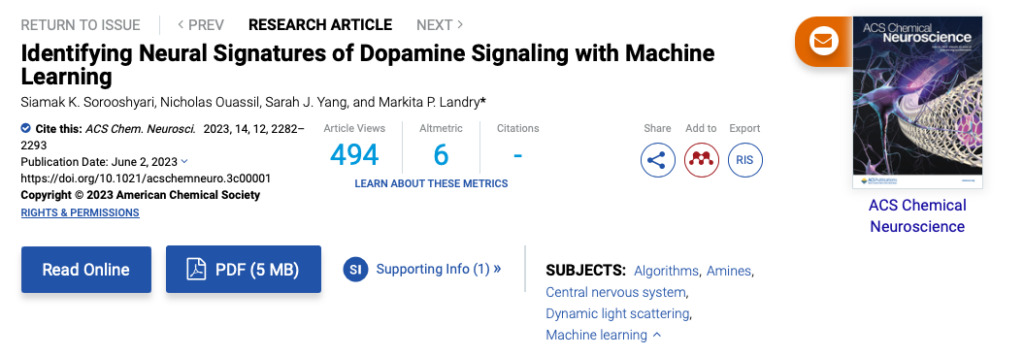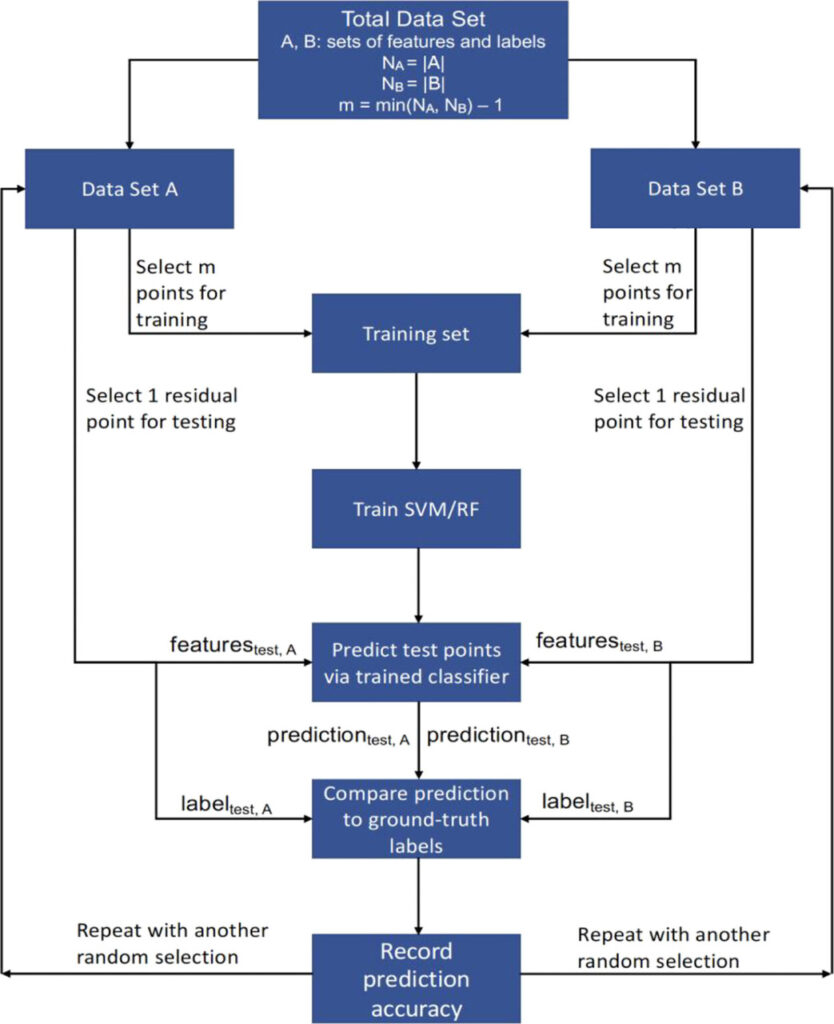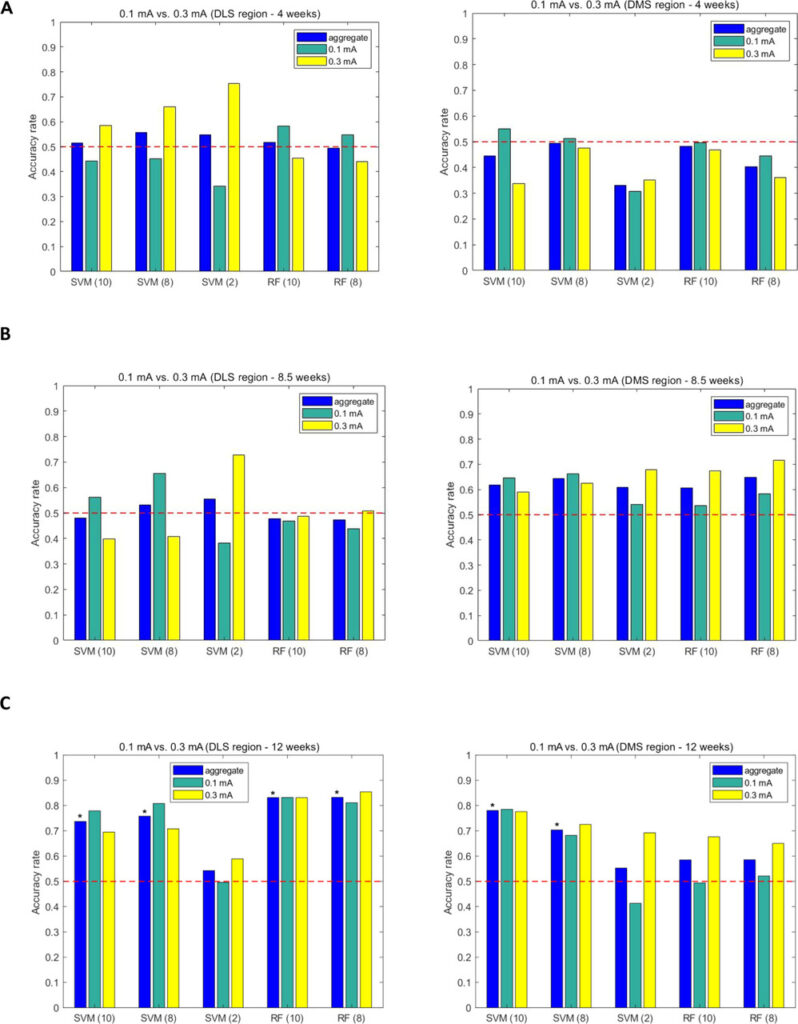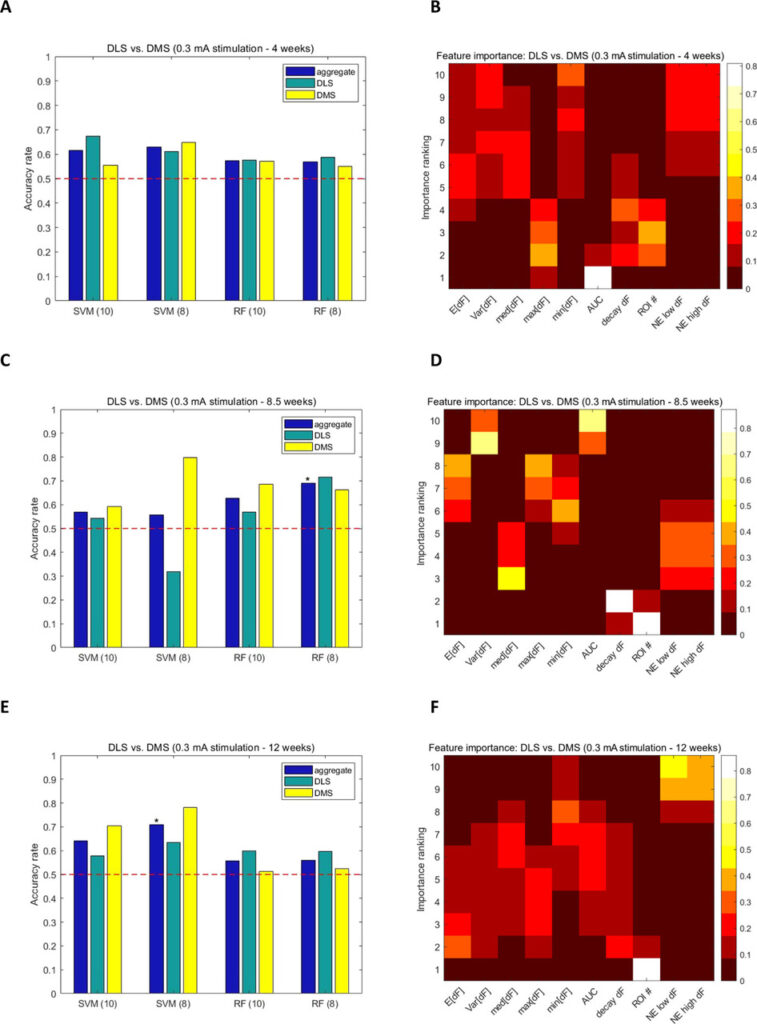"Quantifying" Happiness: UC Berkeley Uses AI to Track Dopamine Release and Brain Areas

Contents at a glance:Dopamine is an important neurotransmitter in the nervous system, closely related to movement, memory and reward systems. It is a messenger of happiness. When we see something pleasing, dopamine is secreted in the body, inducing us to pursue it. However, accurate quantitative analysis of dopamine is still difficult to achieve. With the help of machine learning, the research group of Markita P. Landry at the University of California, Berkeley (UCB) conducted a quantitative analysis of the amount and location of dopamine release, bringing us one step closer to the code of happiness.
Keywords:Machine Learning Reinforcement Learning Dopamine
Author: Setsuna
Editor|Sanyang
This article was first published on the HyperAI WeChat public platform.
We are often asked such a question: "Are you happy?" After reviewing our recent life situation, we may be able to give a relatively satisfactory answer. However, it is not so easy to answer another question about happiness: "How happy are you?"
We can make a relatively accurate judgment of right and wrong about happiness, but it is difficult to make a quantitative analysis of happiness. We can only make a rough assessment using some adverbs of degree.
But from a physiological point of view,The degree of happiness can be judged by the hormone levels in the human body, one of the important hormones is dopamine.

Dopamine is an important neurotransmitter in the nervous system, responsible for transmitting messages between cells.Dopamine is a messenger of happiness. When we see something pleasant, the brain releases dopamine, prompting us to pursue happy things. Therefore, a neural circuit controlled by dopaminergic neurons is also called a reward circuit, which is closely related to learning, memory, and addictive behavior.
Although people have a relatively clear understanding of dopamine's chemical structure, distribution area and physiological effects,However, the mechanism of action of dopamine at the cellular and molecular levels is still not well understood, and it is even more difficult to accurately quantify the role of dopamine in neural circuits.
"Quantifying" happiness: AI deciphers the dopamine code
In 1997, Schultz et al. proposed a possible operating mechanism of the reward circuit - the reward prediction error hypothesis.This hypothesis holds that dopaminergic neurons adjust the release of dopamine based on the error between expected rewards and actual rewards, thereby adjusting people's motivation to pursue something.
In 2020, DeepMind discovered that different neurons in the brain have different reward expectations for the same stimulus.In other words, there are relatively optimistic neurons and relatively pessimistic neurons in the brain. When faced with the same half glass of water, the optimistic neurons will think that there is still half a glass of water and our future is bright. However, the pessimistic neurons will think that there is only half a glass of water left and we are dying of thirst. Further research shows that the distribution of neurons' expectations of rewards is basically consistent with the distribution of actual rewards.

With the help of AI, the analysis of the neural mechanisms of reward circuits is accelerating.
In 2021, Erin S. Calipar's research group at Vanderbilt University (Vandy) in the United States monitored changes in dopamine content in organisms and used support vector machines (SVM) to predict the behavior of organisms. Based on the experimental results, the research group proposed a new model for dopamine regulation of physiological activities.
Recently, AI’s interpretation of dopamine has reached a higher level.With the help of machine learning, Markita P. Landry's research group at the University of California, Berkeley (UCB) conducted a quantitative analysis of the amount of dopamine released and the brain areas in which it is released, providing new ideas for the study of neuroimaging and neural circuits.
The related research has been published in ACS Chemical Neuroscience, titled "Identifying Neural Signatures of Dopamine Signaling with Machine Learning."

Paper address:https://pubs.acs.org/doi/full/10.1021/acschemneuro.3c00001
This study mainly addressed two issues:
1. Distinguish the amount of dopamine released under different stimuli(0.1 mA and 0.3 mA current stimulation);
2. Determine the brain area where dopamine is released(Dorsolateral striatum DLS and dorsomedial striatum DMS).
First, they labeled dopamine with near infrared catecholamine nanosensors (nIRCat).After labeling, dopamine will emit fluorescence under an infrared microscope, and the fluorescence intensity is positively correlated with the dopamine concentration.When electrical stimulation is applied to the brain, dopamine is released and then recycled. This process leaves a fluorescence intensity curve under an infrared microscope. Quantification of the fluorescence curve can yield eight statistical features, such as the average fluorescence intensity, the number of dopamine release sites (ROI, regions of interests), and two time features, including the duration of time when the fluorescence intensity is higher or lower than 2 times the standard deviation.These feature values can be used to train machine learning models.

A:Fluorescence results observed before and after current stimulation
B:Fluorescence intensity curve before and after current stimulation
The researchers used two models, support vector machine (SVM) and random forest model (RF), for training and analysis respectively.
The SVM model can classify the results into two categories based on complex nonlinear features and apply the boundary conditions obtained through training to the test data. The RF model consists of multiple decision trees, and the decisions made by each decision tree are finally sorted together to obtain the final output result.
The RF model can fully interpret the variables in the results to ensure accurate predictions. By randomly selecting data and features, it reduces the sensitivity of the decision tree model to the original training data and increases the differences between decision trees.
Both models require a smaller amount of training data and can separate the results into two categories, which matches the purpose of this study.

Data Set A and Data Set B:Represents different current stimulation or dopamine release concentration in different brain regions
After the two models are trained, the fluorescence intensity curves obtained under different current stimulations are used as input, and the models can judge the stimulation intensity and the brain area where dopamine is released.

Figure A:Results of 4-week-old mice
Figure B:Results of 8.5-week-old mice
Figure C:Results of 12-week-old mice
The results show that as the age of the mice increases, the accuracy of the two models in judging the intensity of stimulation continues to increase.This is mainly because, as the age of mice increases, their hormone levels gradually stabilize and become easier to predict. In 12-week-old mice, the RF model can accurately judge the intensity of stimulation by up to 0.832.

A&B:Results of 4-week-old mice
C&D:Results of 8.5-week-old mice
E&F:Results of 12-week-old mice
As can be seen from the figure, similar to the results of stimulation intensity, machine learning has the highest judgment accuracy on 12-week-old mice, up to 0.708. At the same time, different input features will also affect the judgment accuracy of the model.Among different feature parameters, ROI is the most important for the model's judgment accuracy.
Through machine learning, researchers broke the constraints of traditional data analysis, selected a large number of feature variables, and improved the model's judgment accuracy through feature ROI that was ignored by traditional data analysis.In addition, this model can be extended to neural circuits other than dopamine, providing new ideas for the study of neural imaging and neural mechanisms.
Dopamine: The double-edged sword of happiness and loss
Dopamine gives us a feeling of pleasure and motivates us to pursue pleasurable things.Whether it is delicious food, beautiful scenery, proper exercise or active social interaction, it helps release dopamine, thus helping us maintain a good mood.Because of this, dopamine can also be used as a marketing tool for businesses. From beautifully packaged "dopamine catering" to the "dopamine outfits" sweeping social media, bright colors not only embellish people's lives, but also brighten people's moods.

However, after being happy, the dopamine level in the body will temporarily drop below normal levels, which will lead to a feeling of depression.After long-term and frequent secretion of dopamine, the human body's perception of happiness will become dull, making it difficult for people to appreciate the beauty of life and more likely to become lost. Therefore, some people have proposed the concept of "dopamine withdrawal", which controls the release of dopamine in the body by adjusting work and rest, controlling entertainment time, and staying away from social media, so as to return to life and experience true happiness.
Whether it is "dopamine dressing" or "dopamine withdrawal", everyone is pursuing the beauty in life and making themselves live happily.Although both theories have certain physiological basis, their actual effects still need to be studied.With the help of AI, researchers are constantly exploring the mechanisms behind neural activity and the mysteries of dopamine. I believe that one day, when asked "How happy are you", people will be able to answer without hesitation, 100%.
This article was first published on the HyperAI WeChat public platform.
Reference articles:
[1]https://www.nature.com/articles/s41586-019-1924-6#additional-information
[2]https://www.sciencedirect.com/science/article/pii/S096098222101188X
[3]https://www.science.org/doi/10.1126/science.275.5306.1593
[4]https://prezi.com/gxadjg6gz7li/nicotine-and-the-brain-reward-system/
[5]https://youtu.be/v6VJ2RO66Ag